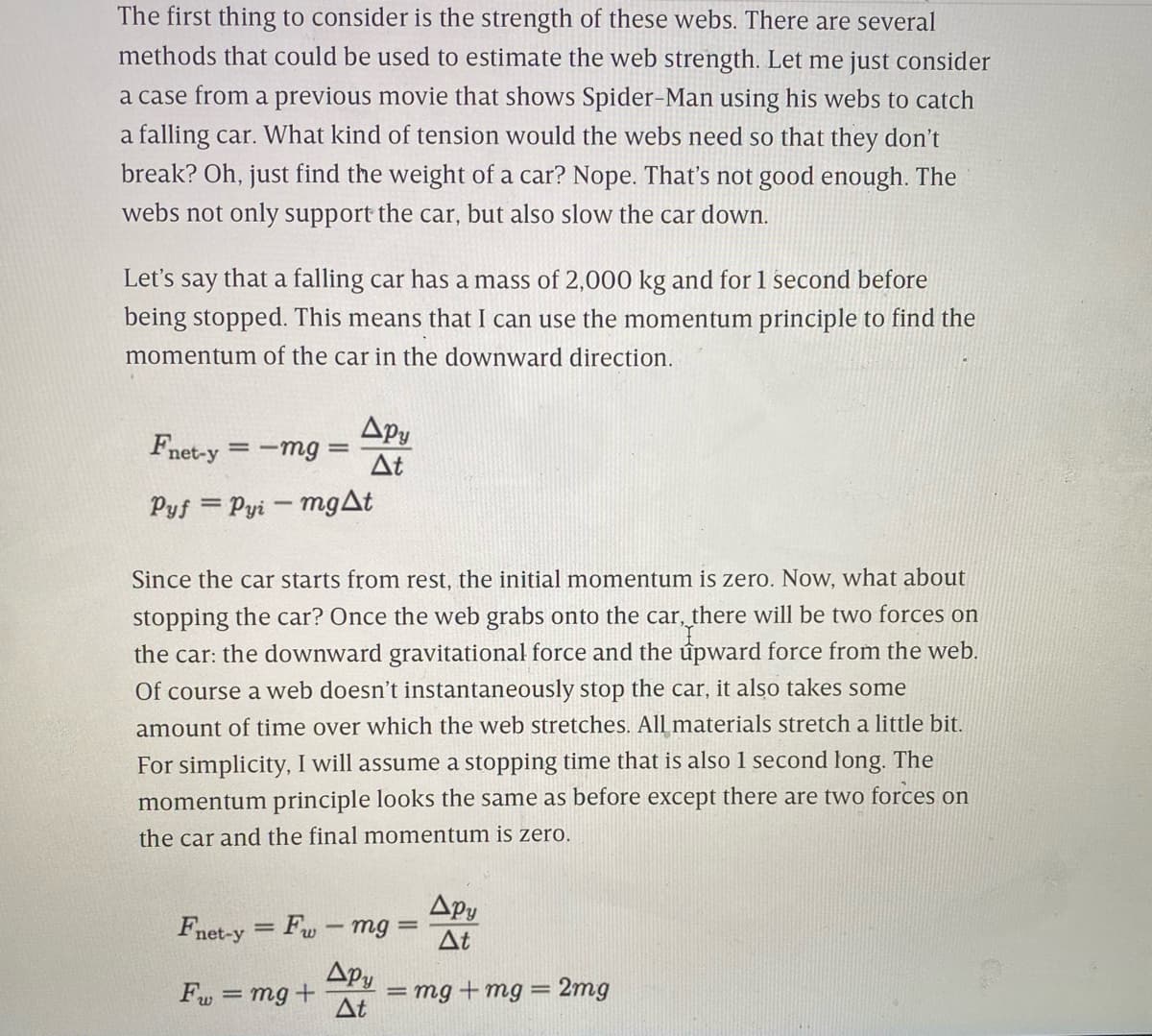what would the web strength be if there was a car with mass of 2000 kg falling off of a bridge for one second before being stopped? -initial momentum is 0 there is a downward gravitational force and an upward force from the web
what would the web strength be if there was a car with mass of 2000 kg falling off of a bridge for one second before being stopped? -initial momentum is 0 there is a downward gravitational force and an upward force from the web
University Physics Volume 1
18th Edition
ISBN:9781938168277
Author:William Moebs, Samuel J. Ling, Jeff Sanny
Publisher:William Moebs, Samuel J. Ling, Jeff Sanny
Chapter12: Static Equilibrium And Elasticity
Section: Chapter Questions
Problem 17CQ: What type of stress are you applying when you press on the ends of a wooden rod? When you pull on...
Related questions
Question
what would the web strength be if there was a car with mass of 2000 kg falling off of a bridge for one second before being stopped?
-initial momentum is 0
there is a downward gravitational force and an upward force from the web

Transcribed Image Text:The first thing to consider is the strength of these webs. There are several
methods that could be used to estimate the web strength. Let me just consider
a case from a previous movie that shows Spider-Man using his webs to catch
a falling car. What kind of tension would the webs need so that they don't
break? Oh, just find the weight of a car? Nope. That's not good enough. The
webs not only support the car, but also slow the car down.
Let's say that a falling car has a mass of 2,000 kg and for 1 second before
being stopped. This means that I can use the momentum principle to find the
momentum of the car in the downward direction.
Apy
Fnet-y-mg = At
Pyf=Pyi-mg At
Since the car starts from rest, the initial momentum is zero. Now, what about
stopping the car? Once the web grabs onto the car, there will be two forces on
the car: the downward gravitational force and the upward force from the web.
Of course a web doesn't instantaneously stop the car, it also takes some
amount of time over which the web stretches. All materials stretch a little bit.
For simplicity, I will assume a stopping time that is also 1 second long. The
momentum principle looks the same as before except there are two forces on
the car and the final momentum is zero.
Fnet-y=Fw - mg
Fw=mg +
Apy
At
=mg+mg = 2mg
Apy
At
=
Expert Solution
This question has been solved!
Explore an expertly crafted, step-by-step solution for a thorough understanding of key concepts.
Step by step
Solved in 2 steps with 2 images

Knowledge Booster
Learn more about
Need a deep-dive on the concept behind this application? Look no further. Learn more about this topic, physics and related others by exploring similar questions and additional content below.Recommended textbooks for you

University Physics Volume 1
Physics
ISBN:
9781938168277
Author:
William Moebs, Samuel J. Ling, Jeff Sanny
Publisher:
OpenStax - Rice University

Principles of Physics: A Calculus-Based Text
Physics
ISBN:
9781133104261
Author:
Raymond A. Serway, John W. Jewett
Publisher:
Cengage Learning

University Physics Volume 1
Physics
ISBN:
9781938168277
Author:
William Moebs, Samuel J. Ling, Jeff Sanny
Publisher:
OpenStax - Rice University

Principles of Physics: A Calculus-Based Text
Physics
ISBN:
9781133104261
Author:
Raymond A. Serway, John W. Jewett
Publisher:
Cengage Learning